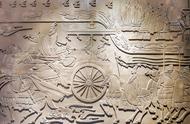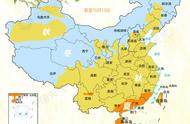当你发现宝宝在玩的时候可以自由翻身,由仰卧翻身为趴着(通常在4-6个月),这是可以不再包裹婴儿让其睡觉了。
以下是婴儿包裹好处和注意事项及原则的原文,有需要的朋友可以参考便于更好的理解。
Wrapping and placing babies on the back provides stability and helps to keep babies in the recommended backposition1-2. Epidemiological studies have shown that being on the back and wrapped decreases the risk of SIDS morethan being on the back without being wrapped3. Wrapping a baby also reduces crying time4 and promotes sleep bylessening the frequency of spontaneous arousals5-6 . However wrapping a baby does not influence breastfeedingfrequency and duration and the amount of ingested milk7. Wrapping has also been shown to be effective in reducinga baby’s response to pain, while preterm babies who are wrapped and placed on their back show improvedneuromuscular development.3
Tummy sleeping increases the risk of sudden unexpected infant death and must be avoided. Wrapping a baby andplacing them in the tummy position is even more dangerous as it prevents babies from moving to a position of safety2,3.Wrapping techniques that use tight wrapping with the legs straight and together have been associated with anincreased incidence of abnormal hip development.3,8 Other studies have linked tight chest wrapping with an increasedrisk for pneumonia9, while some studies have indicated that overheating may occur if the baby is wrapped with theirhead covered or if the baby has an infection3. It is therefore important to allow for hip flexion and chest wall expansionwhen wrapping2,3 and to ensure the head is uncovered and the baby does not have an infection or fever3.A variety of baby wrapping techniques appropriate to the baby’s developmental age can be used based on theprinciples of safe wrapping. For example, a younger baby (less than 3 months) may have their arms included in thewrap to reduce the effects of the Moro or ‘startle’ reflex; whilst an older baby (more than 3 months) may have theirlower body wrapped with their arms free, to allow the baby access to their hands and fingers which promotes selfsoothing behaviour, while still reducing the risk of the baby turning to the tummy position. The Moro or ‘startle’ reflexshould have disappeared by the time the baby is 4-5 months of age.
如何为婴儿裹襁褓
墨尔本皇家儿童医院做了一个视频:
Wrapping your baby safely to help prevent developmental dysplasia of the hip(安全地包裹婴儿以预防臀部发育不良):
http://www.rch.org.au/kidsinfo/fact_sheets/Wrapping_your_baby_safely_to_help_prevent_developmental_dysplasia_of_the_hip_VIDEO/
预防婴儿臀部发育不良,髋关节脱臼的重点在于,包裹婴儿的时候,髋部、腿部不要包得太紧了,要保证髋部、腿部有一定活动空间。


婴儿在妈妈肚子里腿部是这样的姿势。
















